Longevity-Mastering Animals Of The World Who Will Outlive Us All
When looking at the vast number of species roaming the earth, it’s very clear that mankind isn’t the superior one. Between giant crabs, camouflaging fishes, and water spiders that have the ability to debilitate fish and frogs, there is so much life out there we don’t know about. A sign of these animals’ eminence is the amount of time some of them have spent wandering the world’s oceans, skies, and soil. A number of animals have been around for over 200 years, witnessing many world-changing moments in history from their habitats. These impressive creatures deserve some recognition, which is why we’re bringing you this list of 35 of the world’s longest-living animals.
Rougheye Rockfish
We’re kicking the list off with the oldest species of rockfish. First up, we have the rougheye rockfish. They are among the longest-living animals, living up to 205 years. These creatures are found in the deep waters of the North Pacific.

Rougheye rockfish are the late-bloomers of the sea. They only mature for reproduction at the age of 25. In fact, it is said that the older the female at the time of breeding, the tougher the offspring. Unfortunately, like many other sea creatures, they are threatened by overfishing.
Shortraker Rockfish
Despite its name, the shortraker rockfish isn’t exactly short. In fact, it can grow as long as 1 meter and weigh up to 44 pounds. The oldest of this species was recorded to have lived up to 157 years.
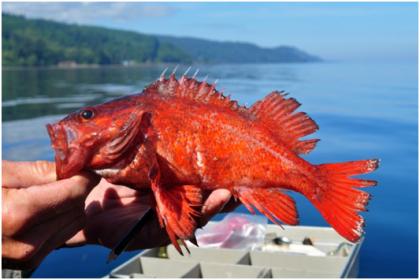
The average life expectancy of this fish is normally about 120 years. They are the largest of the rockfish species and are often found in Alaska. These fishes stand out due to its size and its very red coloring.
Redbanded Rockfish
This species is the youngest living rockfish species. By young, we mean the oldest redbanded rockfish on record is 106 years old. They may bear similarities with the common clownfish, but the two species actually have distinctive features.
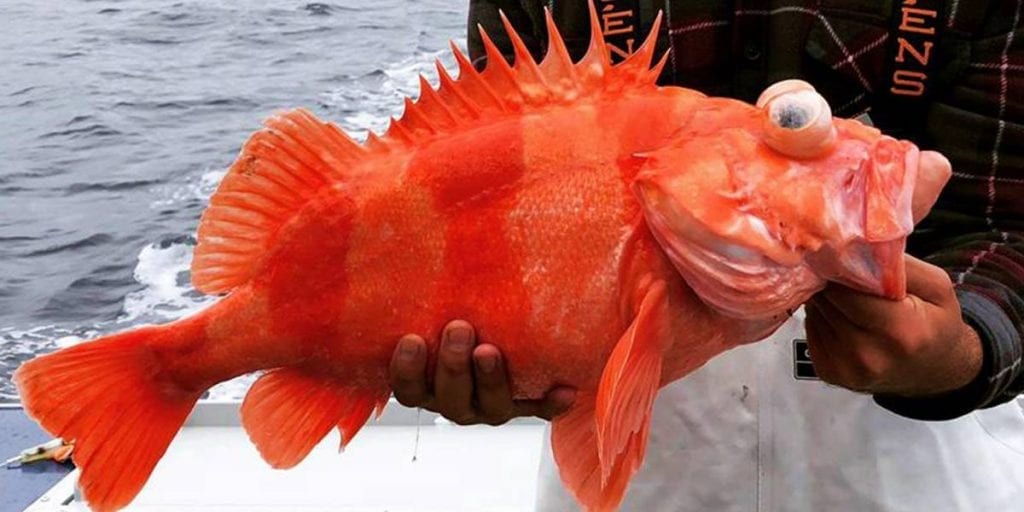
The common “Nemo” fish is smaller, and its bands are colored orange, white, and black. Meanwhile, the bands on the red-banded rockfish are various shades of orange and light pink. They also have fins on their backs.
Humpback Whale
After the rockfish come the whales. The humpback whale is the most well-known and popular species of whale. They can find their home in any ocean. You may be able to catch them in action if you’re around their feeding and breeding areas.
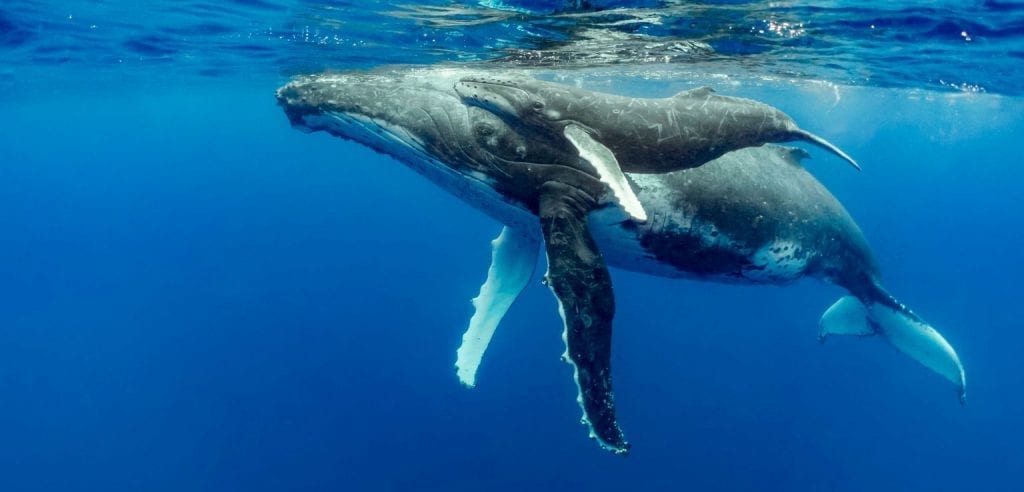
Humpback whales are known for their songs and friendly personalities. They are known to approach boats and passing divers often. Their average lifespan is 50 years old, but records have shown that there have been humpbacks that have lived up to 95 years.
Bowhead Whale
The oldest recorded bowhead whale lived a whopping 211 years. They are found in the Arctic Ocean and are the only whales endemic to this area. The bowhead has the largest mouth of any fauna species—its mouth takes up 1/3 of its body.
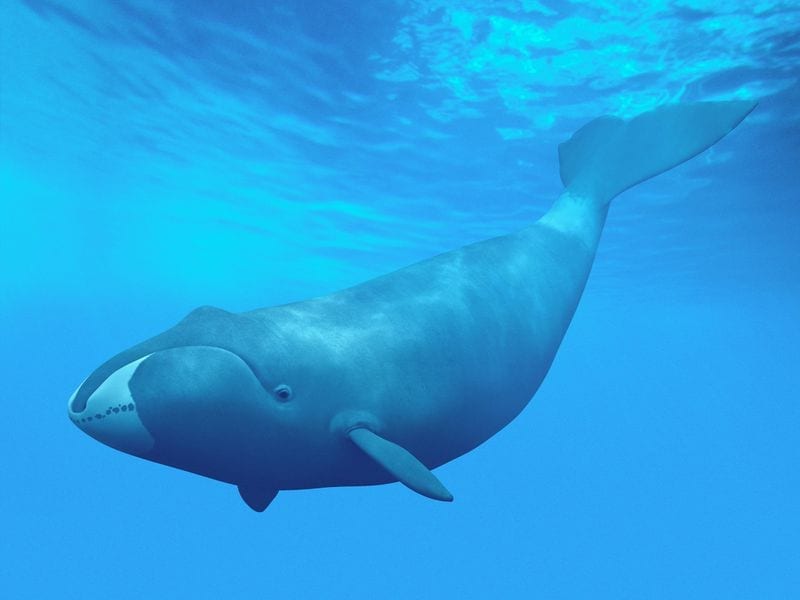
Multiple bowhead whales have been reported to live for an average of anywhere between 135 to 172 years. These creatures have very strong skulls and can break through masses of sea ice that are at least 7 inches thick. They can weigh up to 100 tons and span between 50 to 60 feet.
Fin Whale
These whales are also known as the finback whale because of the dorsal fin along their backs. They are the second-largest living mammal on Earth. The oldest recorded fin whale was 94 years old, but a study in Denmark found that one particular fin whale swam the oceans for about 135 to 140 years.
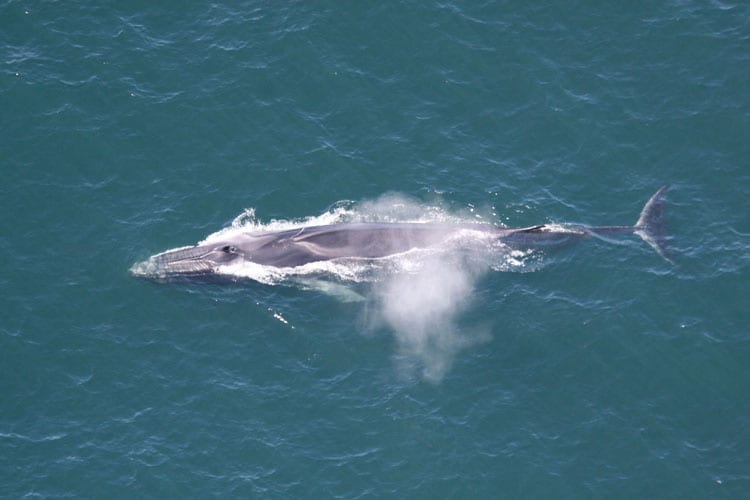
Finbacks can weigh almost 80 tons and measure up to 80 feet. Unfortunately, these peaceful creatures are endangered and are in danger of extinction. They have been under threat from the commercial whaling industry for many years.
Orca
Better known as the killer whale, the girl power in this species is strong. Females are known to outlive males, with lifespans of up to 90 years old. The female orcas have strong bonds and can travel in pods together for up to four generations.
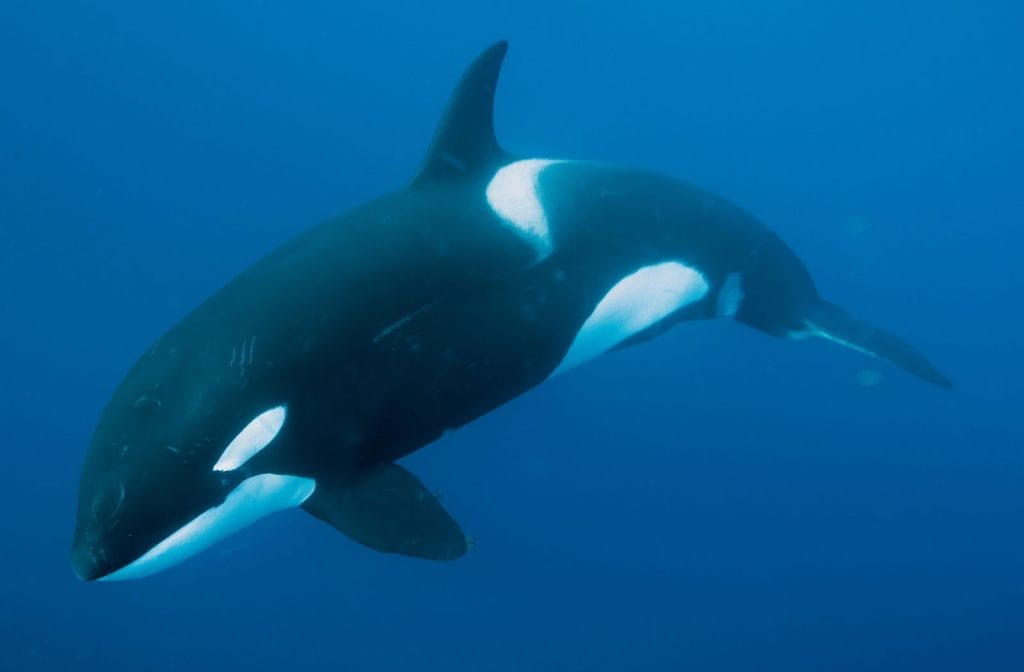
In captivity, male orcas only live to 17 years old and females 29, proving that they need to be in the wild to thrive and survive. Adult male orcas can weigh up to 6 tons. These teethed whales eat penguins, fish, and other marine mammals, sometimes even other whales.
Blue Whale
At a length of just under 30 meters and weighing up to 200 tonnes, the blue whale is the largest of the whale species and the largest living creature on earth. They may live solely on a diet of krill, but they need to consume almost 4 tons of it a day.
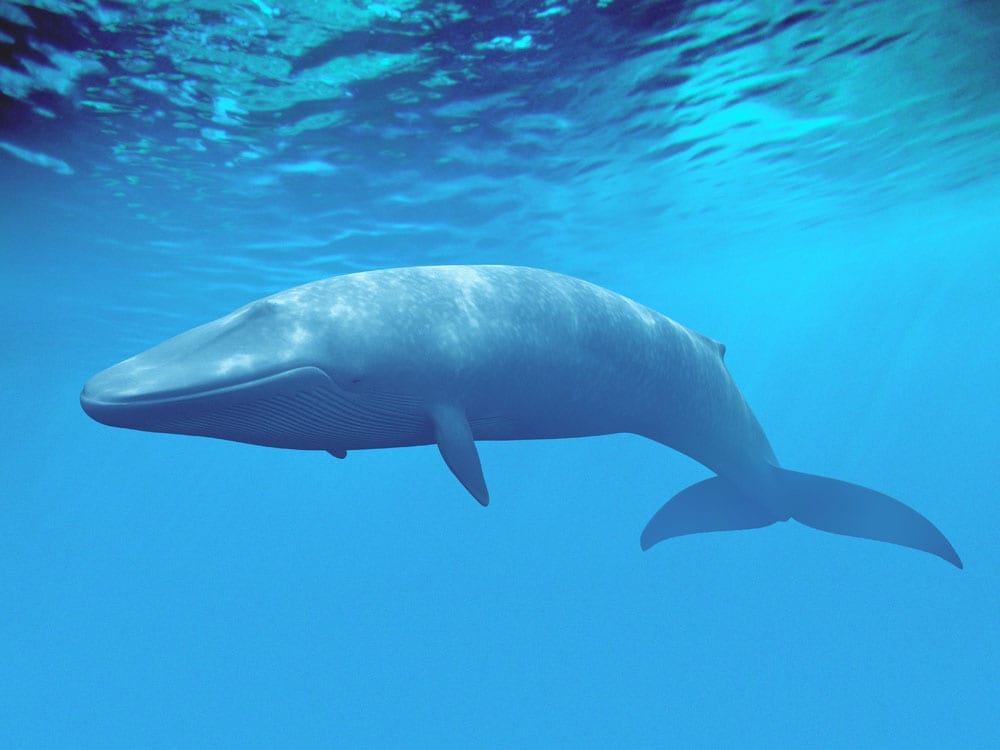
The blue whale’s average lifespan is 80 to 90 years, but one particular whale was found to have lived up to 110. They can be found in oceans all over the world except the Arctic. Despite their size, blue whales can sometimes fall prey to killer whales and sharks.
Geoducks
Geoducks are the oddest-looking animal on this list. These phallic-looking creatures are actually clams, with shells up to 6 inches long and a non-retractable neck that can span up to 3.5 feet. On average, geoducks can live up to 140 years, although the oldest recorded geoduck was 168 years old.
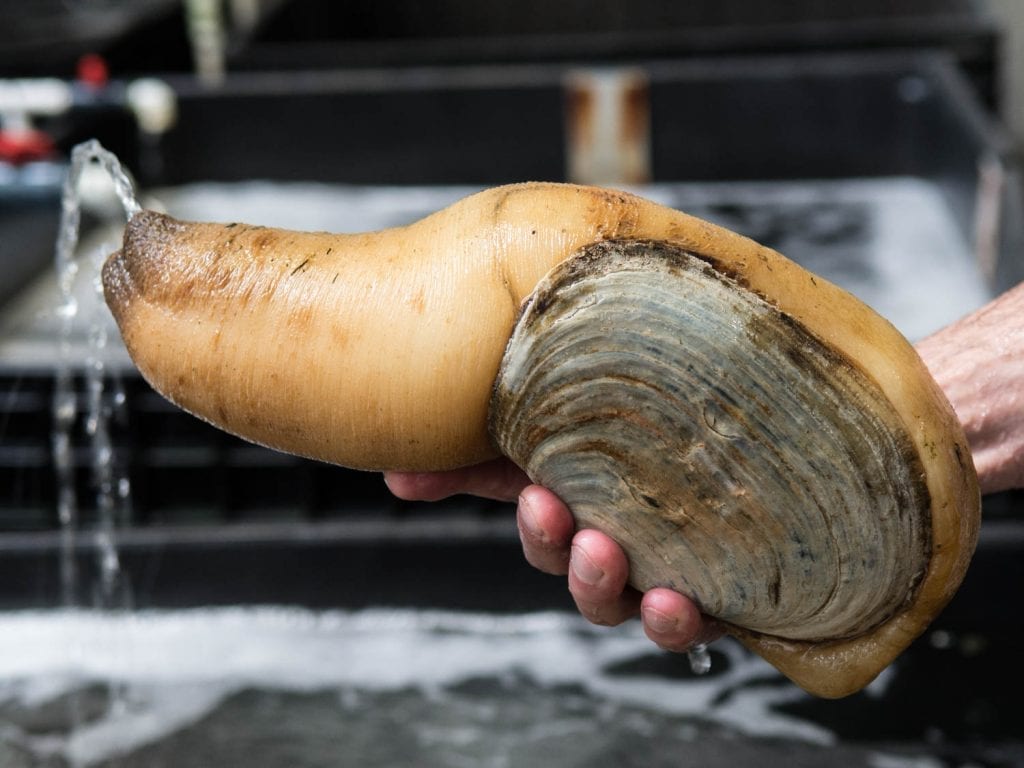
These clams are delicacies in Asian cuisine, even served as raw sashimi in Japan. Geoducks can cost upwards of USD$150 per pound. Mature clams can weigh up to 1.5kg with the largest recorded geoduck weighed in at around 6.8 kg’s.
Orange Roughy
Scientists estimate the lifespan of these sea creatures by examining the number of growth rings on their ear bones. They concluded that the orange roughy lives an average of 120 years. However, there was a roughy in New Zealand that reached 230, and one in Tasmania lived until 250.
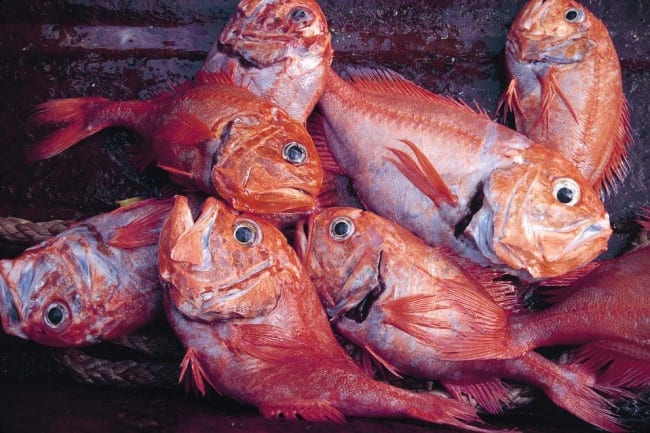
Orange roughies are categorized as “vulnerable to exploitation” by the UK Marine Conservation Society. Over time, they have become a popular food item. It is also easy for fishermen to catch them as they gather in large schools, so their population is currently threatened.
Atlantic Halibut
These flatfish are also the biggest species of flounder fish. They spend their days on the ocean floor in depths of anywhere between 50 to 2,000 meters. Mature Atlantic halibuts can weigh up to 180kg, making them one of the largest fish in the Gulf of Maine.

The Atlantic halibut is classified as endangered due to overfishing and a slow growth rate. The recorded average age for them is 50 years old, but there are unverified scientific predictions that say they can live up to 90.
Aldabra Tortoise
Moving on to the tortoise group. The Aldabra tortoise is an Aldabra island native. It is one of the world’s biggest and heaviest tortoises. The males can weigh up to 550 pounds and the females 350 pounds. Male shells can grow as long as 4 feet while females can measure up to 3.
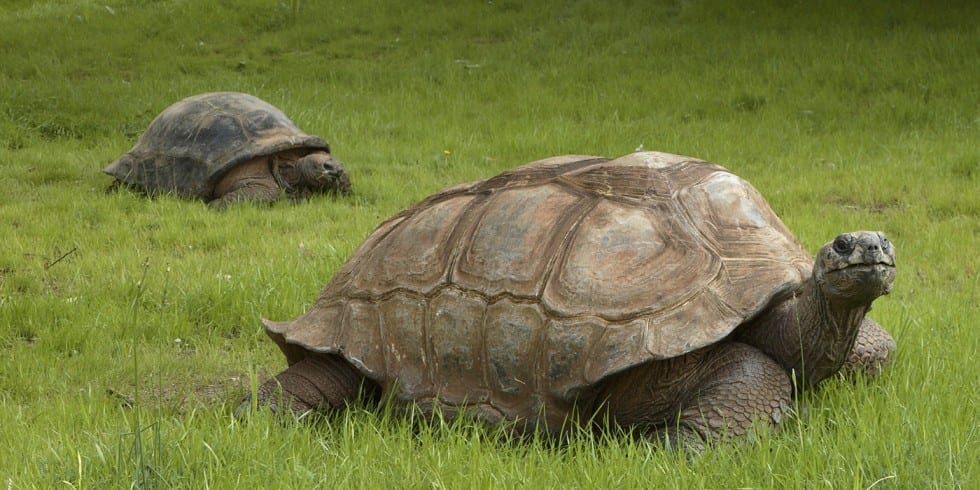
Aldabra tortoises are rare creatures only found on one island in the Seychelles. This year, one particular tortoise named Jonathan turns 187. However, back in 2006, the oldest recorded Aldabra tortoise named Adwaita passed away at 255 in the Kolkata Zoo in India.
Galapagos Tortoise
After an extinction risk caused by habitat damage and hunting, conservation efforts have managed to restore the population of the Galapagos tortoise back to 19,000. They are the largest tortoise in the world, growing up to 5 feet and weighing up to 417kg.
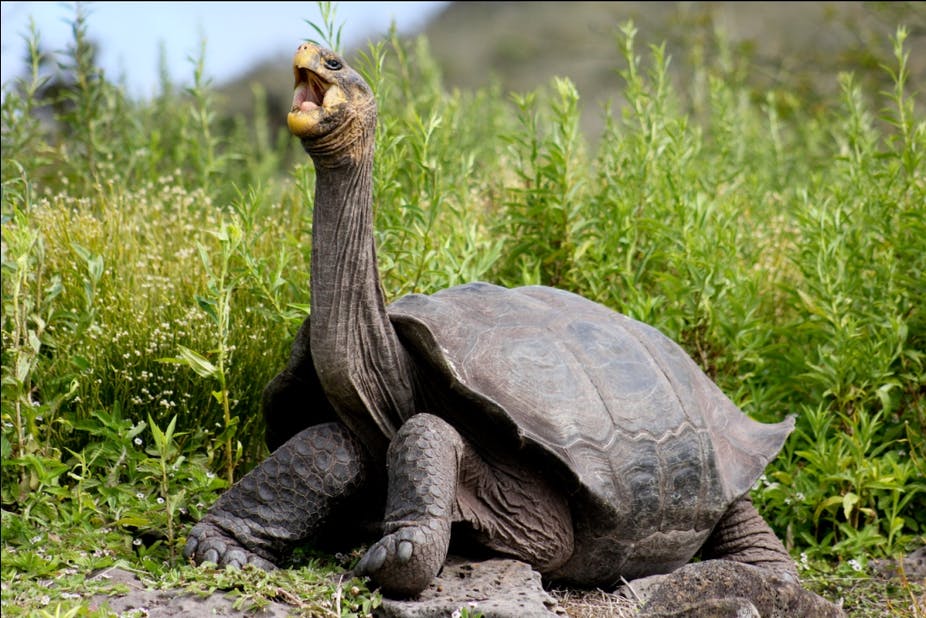
Harriet was a female turtle that lived in the Australian Zoo that was believed to live to about 170 years. They are classified as vulnerable, although there are some subspecies of these tortoises that are endangered or critically endangered.
Spur-thighed Tortoise
Also known as the Greek tortoise, these are the most popular pets. They are one of the smaller tortoise species around, with mature adults only growing up to 8 inches. However, they are pets you can pass down for generations because they live up to 127 years.
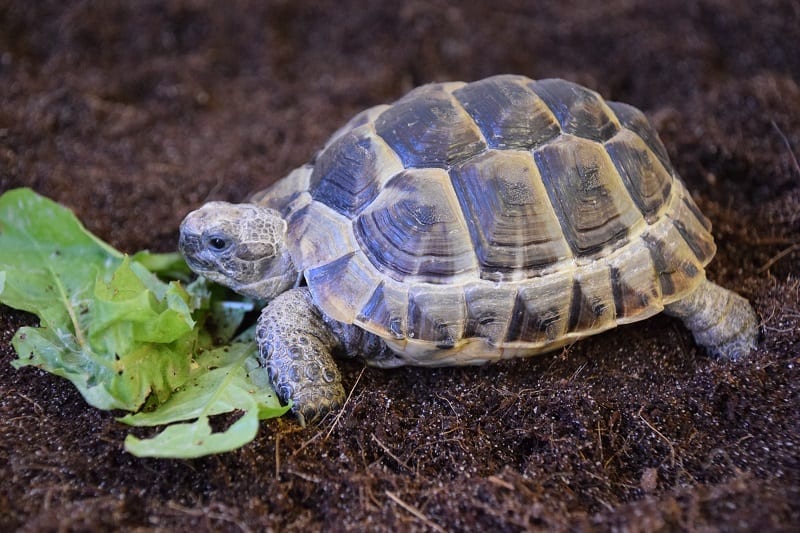
There have also been unverified reports of spur-thighed tortoises living up to the ripe old age of 200 years old. These creatures are omnivorous, but the bulk of their diet is fibrous plants. Sometimes they will eat insects and mollusks.
Eastern Box Turtle
After the tortoises come the turtles. Common in Eastern United States, the Eastern box turtle is the state reptile of both Tennessee and North Carolina. Their defense mechanism is to retreat into their shell and shut it like a box.
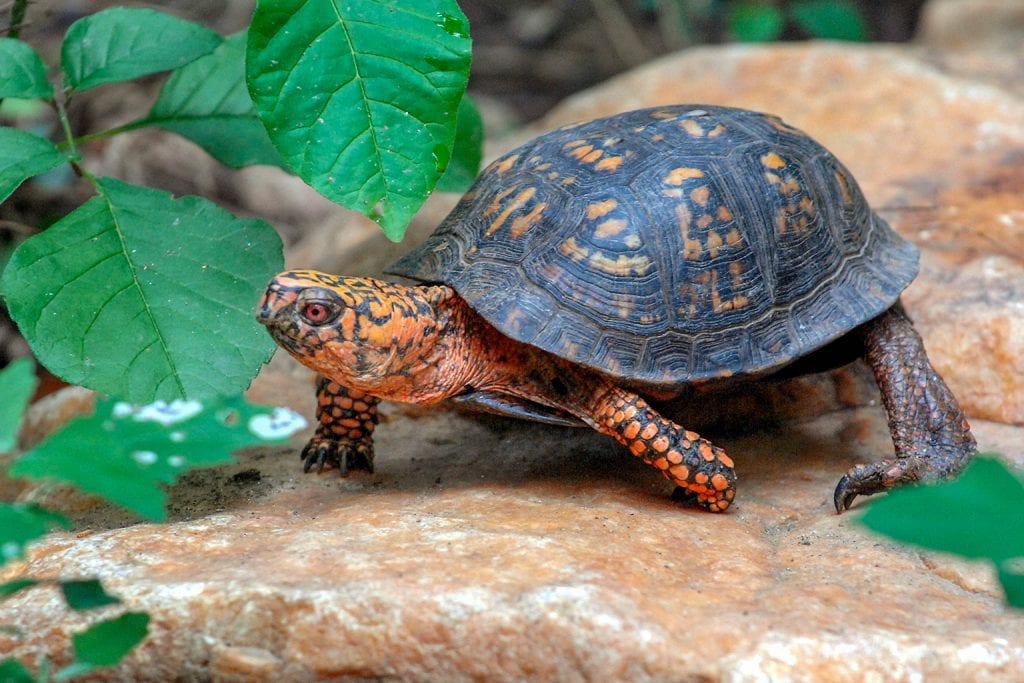
Eastern box turtles do well in captivity, able to live up to 100 years old. However, there is reason to believe one particular box turtle lived to be 138. These turtles grow up to 10cm by 15cm in size, and are omnivorous, feeding on fish, insects, and fruits and plants.
European Pond Turtle
These freshwater turtles used to be commonly found between Europe to the Middle East. They are medium-sized and can grow between 12 to 38cm in length. Their carapace has hints of green but is mostly black and dark brown.
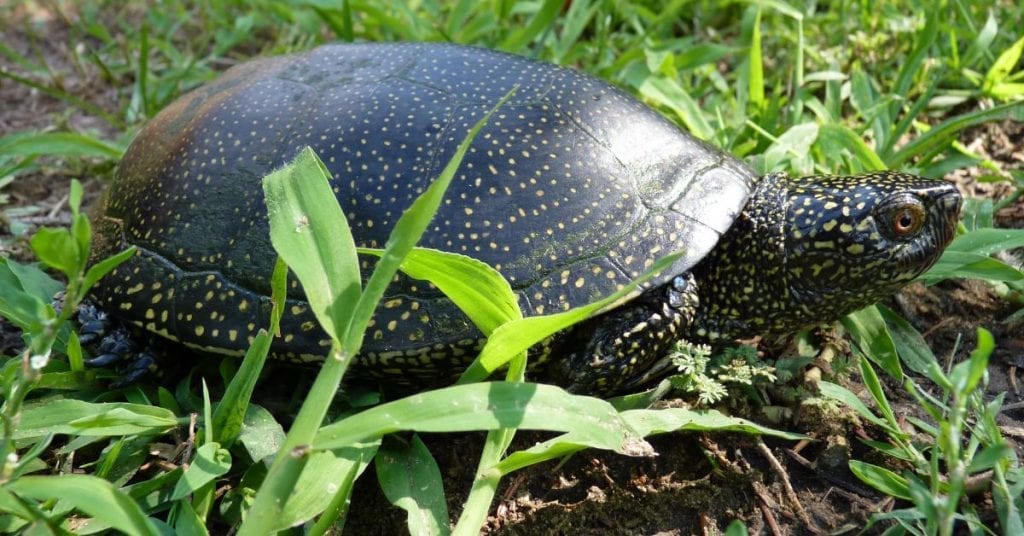
Hatchlings of the European pond turtle are very sensitive to the climate, so their population has decreased along with the changing climate. It is rare for these turtles to live to be over a century. However, one particular turtle found in a botanical garden in Southern France has been reported to live to 120.
Longfin Eel
The longfin eel is one of the two longest-living eels on the list. They are native to New Zealand’s freshwaters and are actually the country’s largest freshwater eel, with adults weighing up to 13 kg, although one was weighed in at 24 kg.
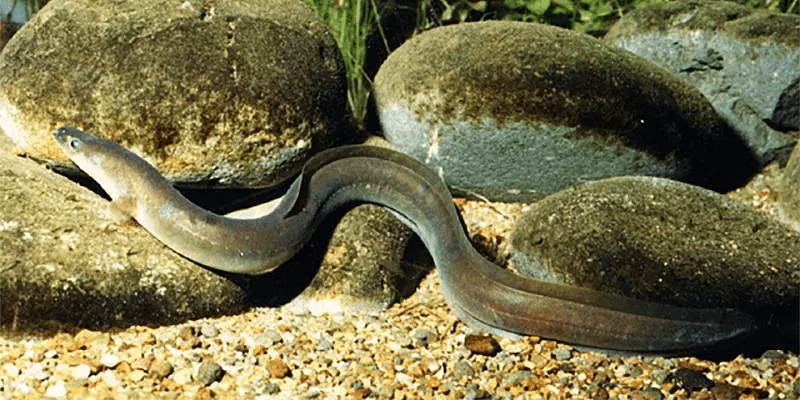
These creatures are reported to live over 100, and the oldest longfin eel was recorded at 106 years old. Female longfins far outlive the males, as males only live between 12 to 35 years. Their population is, unfortunately, dwindling because of commercial harvesting.
European Eel
Though these friendly-faced eels are endangered, they do tend to live very long lives. In captivity, they can live up to 55 years old, but otherwise, their life span is anywhere between 7 to 85 years. However, one European eel in Sweden was claimed to have died at 155 years old.
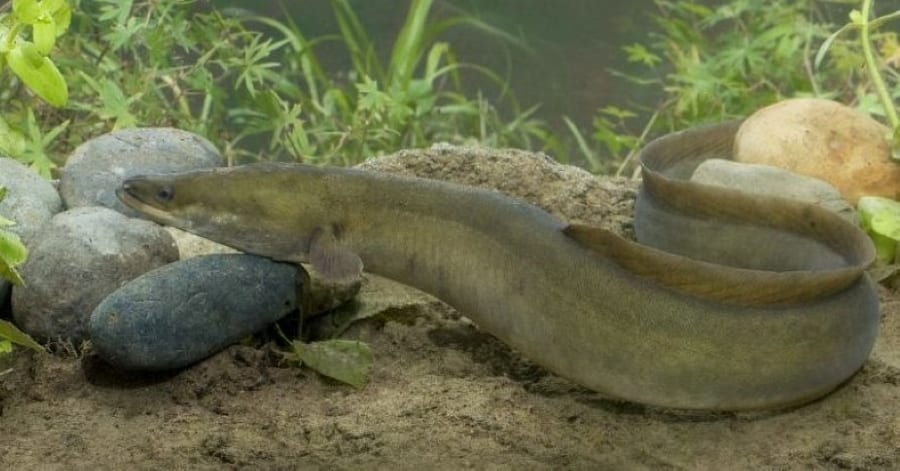
Adult European eels span 60 to 80cm in length and weigh 3.6kg tops. As they grow, their bodies turn translucent, and they become known as glass eels before they make a full cycle and return back to become silver eels.
Red Sea Urchin
You do not want to step on these ominous sea urchins with the bright red spines. They are one of the oldest existing animals, with the Canadian urchin living over 200 years. It’s surprising that they can live this long, considering they don’t have hearts or brains.
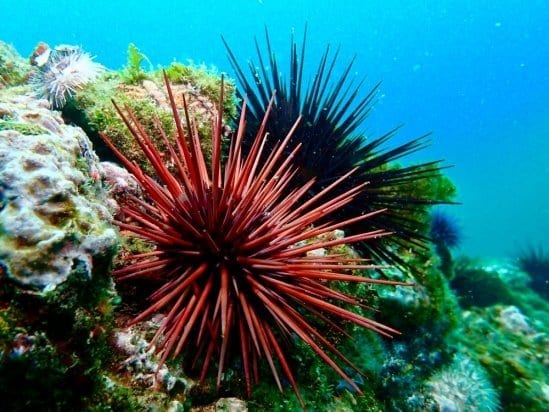
Red sea urchins make their homes in the northeast Pacific Ocean. They can be found in shallow waters and within waters with a depth of up to 100m. The diet that keeps them alive simply consists of kelp and seaweed.
American Lobster
When they are not the centerpiece of fancy dinners with their sweet and tasty meat, American lobsters roam the ocean for what is believed to be 100 years. They reside in the Atlantic, where their metabolism is slowed due to low temperatures. This means they age and grow slowly.
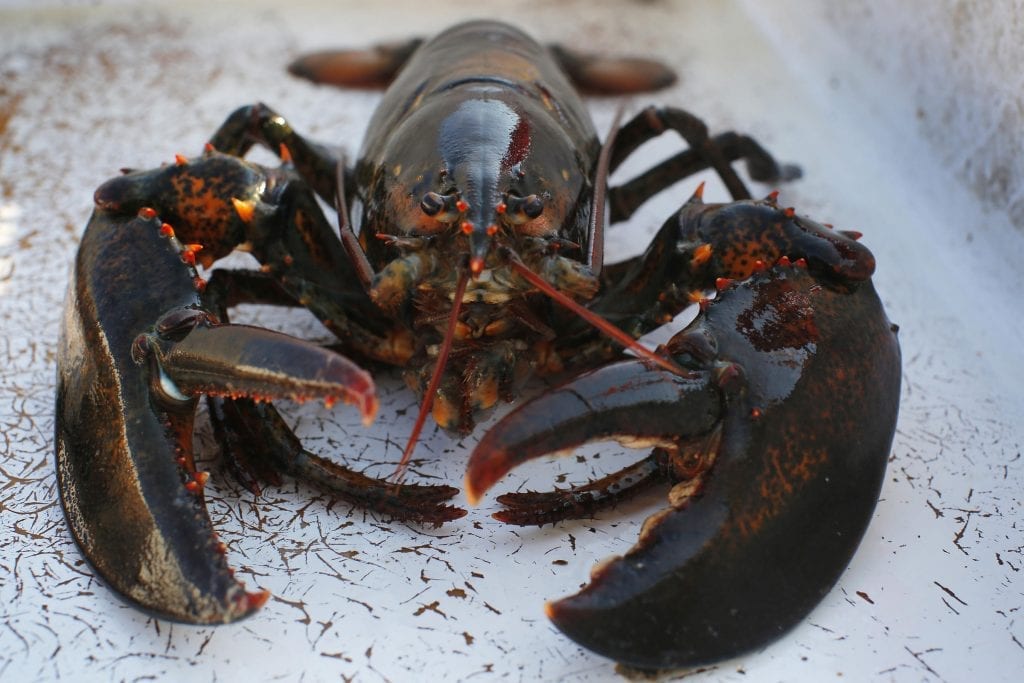
It is actually difficult for scientists to find concrete evidence of this lobster’s age because they shed their shells throughout their lives. They weigh at least 20kg, including their body, shell, and ten legs. The oldest known American lobster was estimated to be 120 years of age,
Tube Worms
These creatures thrive at the bottom of the ocean near hydrothermal vents, which recirculates seawater that seeps through the cracks of the ocean floor. The water around this area is filled with minerals and chemicals which are harmful to any other sea creature but the tube worm.
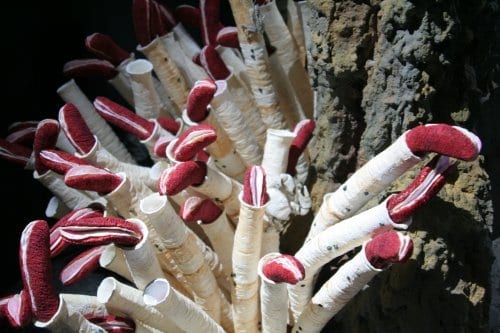
Their long lifespan is credited to the fact that they can withstand high levels of hydrogen sulfide in the water. Tube worms found at the bottom of the Gulf of Mexico, in particular, can live to be roughly 250 years old.
Hydra
It’s amazing that these tiny invertebrates that only grow up to 10mm long are practically immortal. Even more so, they only feed on microscopic marine animals. The secret to the hydra’s longevity is in its ability to regenerate.
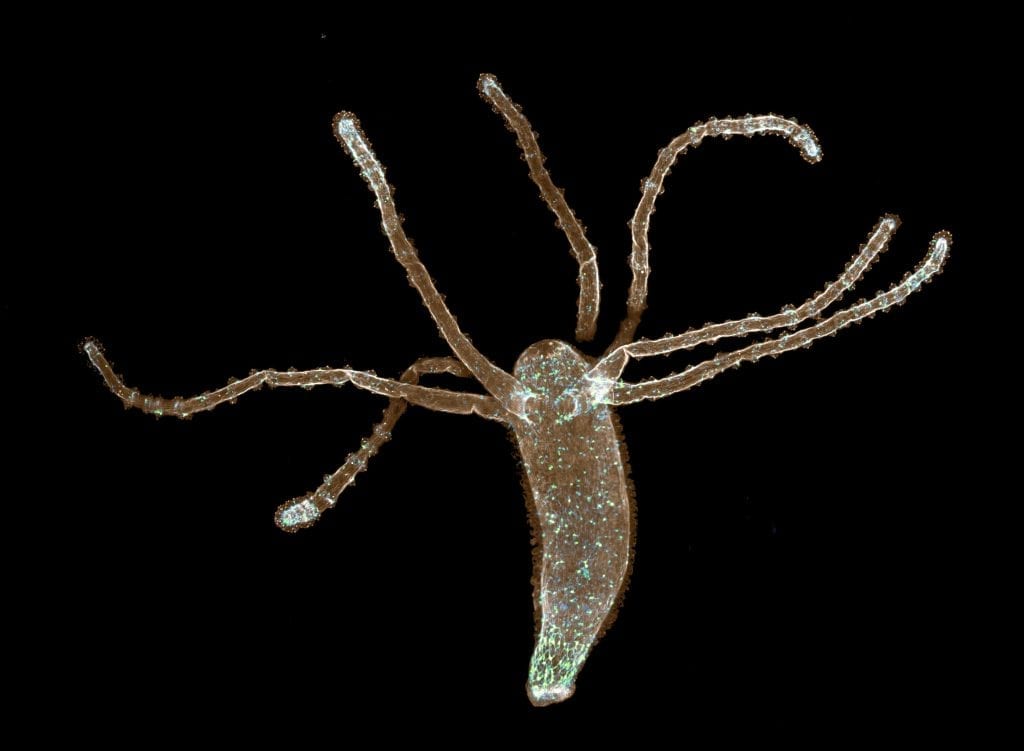
A new research project involving 2,256 hydras showed that over a period of eight years, the death rate was at a constant of one hydra per 167 hydras a year. This agelessness is because a big part of the hydra’s body is actually stem cells. These are able to divide and form any cell type necessary, providing a constant renewal of fresh cells.
Lake Sturgeon
We move on to the sturgeons, an impressively long-living family of fish. The lake sturgeon is found across America, from Lake Champlain in Vermont to the Mississippi River. A century ago, they faced serious extinction, and even today, they are endangered in 19 states.

Female sturgeons outlive their male counterparts, swimming America’s waters for up to 150 years. Males only live about a third of that age, maxing out at 55 years old. Lake sturgeons are only mature and ready to spawn at 15 to 25 years, which makes population growth slow.
Beluga Sturgeon
The beluga sturgeon’s black eggs are a sign of prestige in the culinary world. Fancy dinners serve caviars that can cost up to $4,500 per pound. These eggs are produced by a fish that can weigh up to 2,000 pounds and grow up to 20 feet long.
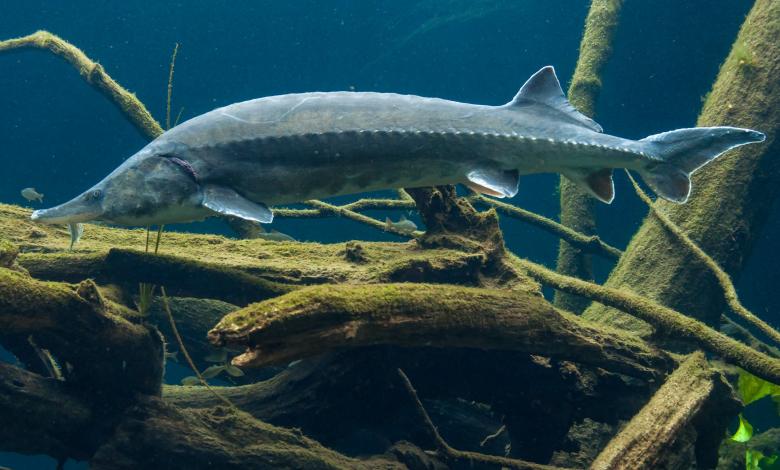
Because they have been hunted down for their meat and caviar, beluga sturgeons are now critically endangered. However, there have been some recorded occasions where beluga sturgeons have lived up to 118 years. These prehistoric fish have been around for over 200 million years.
White Sturgeon
The youngest of the sturgeon family, the oldest recorded white sturgeon lived until 104 years of age. This species is also hunted down for caviar and meat. They find their home in the freshwaters of Canada and the United States.

Like the lake sturgeon, white sturgeons were also nearly extinct at the start of the 20th century. Thankfully, regulations have been put in place to help the species. They are now of the least concern in terms of their conservation status.
The Immortal Jellyfish
The hydra is not the only immortal creature in the sea. The Immortal Jellyfish is also the same, though it is not so much immortal as it just ages backward. These jellies have a Benjamin Button complex. Their life stages consist of growing from a larva to polyp to a fully grown adult and then reverting back to a polyp.
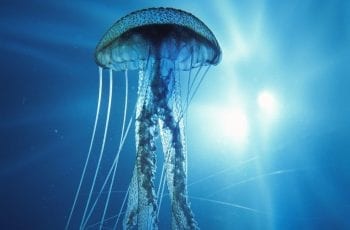
These jellyfish live a continuous life cycle, growing into adults in just weeks. They don’t spawn but rather settle on the sea bed and grow into a colony of polyps. They are found anywhere in the world in tropical waters.
Koi
If you’ve seen a decorative fish pond, you will surely be familiar with the koi fish. They are actually a variety of the carp family. “Koi” is a phonetic pronunciation of the shared Chinese and Japanese characters which means carp.
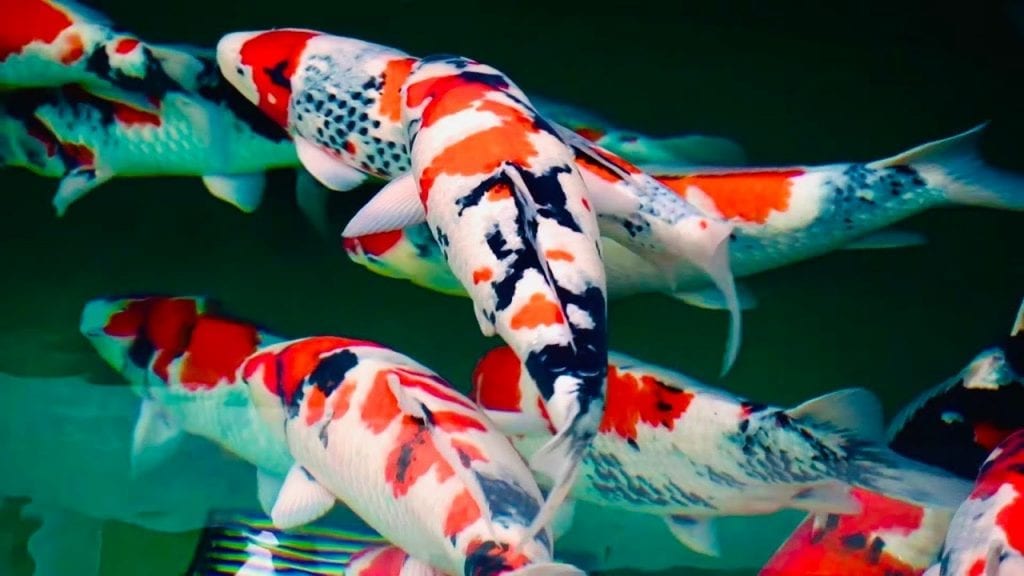
The average koi lifespan is about three decades. However, one impressive koi named Hanako defied the odds, as she was believed to be 226 years old when she died. Koi that grow domestically can grow as long as 15 inches, but Japanese koi measure larger at a maximum of 26 inches.
Laysan Albatross
This bird is one of only two non-marine or freshwater creatures on this list. The Laysan albatross is a seabird prominent in the North-western Islands of Hawaii. Their average lifespan is between 12 to 40 years, but one particular albatross caught scientists’ eye.
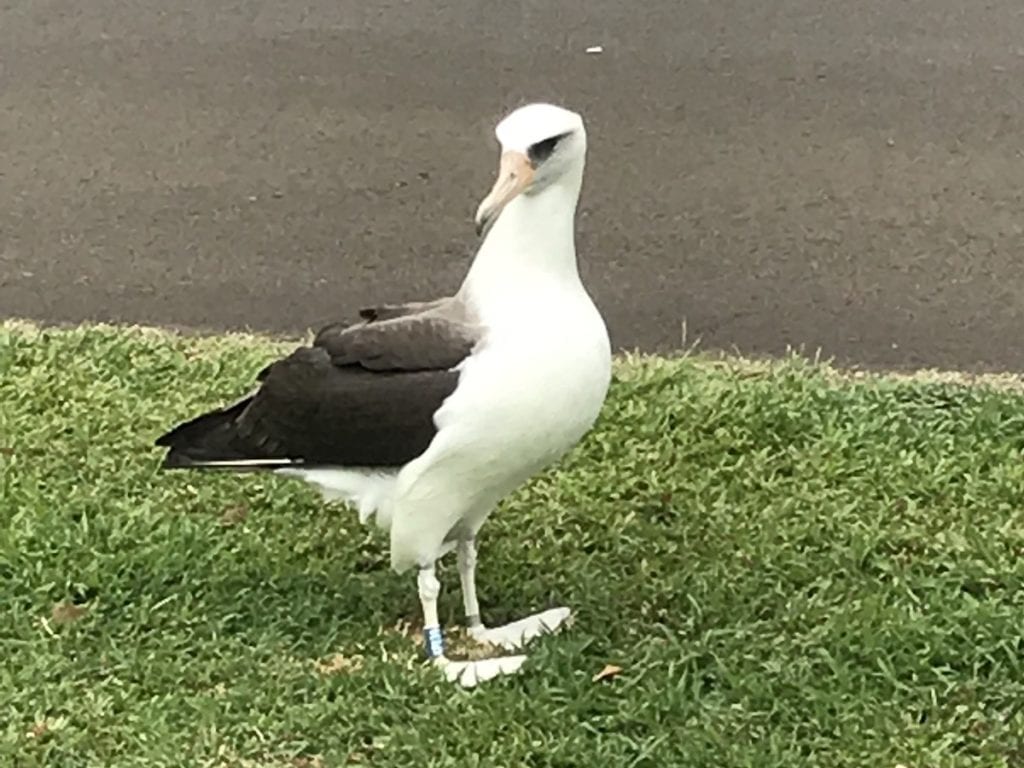
Biologists attached a band on Wisdom the albatross back in 1956. Since then, they tracked Wisdom’s flight patterns, mating, locations, and other habits. The bird lived to be over 98 years old and is the world’s longest banded bird.
Olm Salamander
Olm salamanders are amphibians, but they spend a lot of their time underwater. They are found only in caves in the coastal regions of Slovenia, Bosnia, Herzegovina, and Croatia. Scientific studies have concluded that these pale creatures can live for over 100 years.

These salamanders are completely blind, thanks to its habitat being underground. Their eyesight is just undeveloped due to it never being used. They are usually also very light, with adults weighing just 17g. The only Olm salamanders kept in captivity can be seen at the Zagreb Zoo.
Tuatara
Here is the other non-marine animal on the list. Tuataras are lizards of the order Rhynocephalia, endemic to New Zealand. Their name is Māori for “peaks on the back,” which is one of their most distinctive physical characteristics, and easy to understand when looking at one.
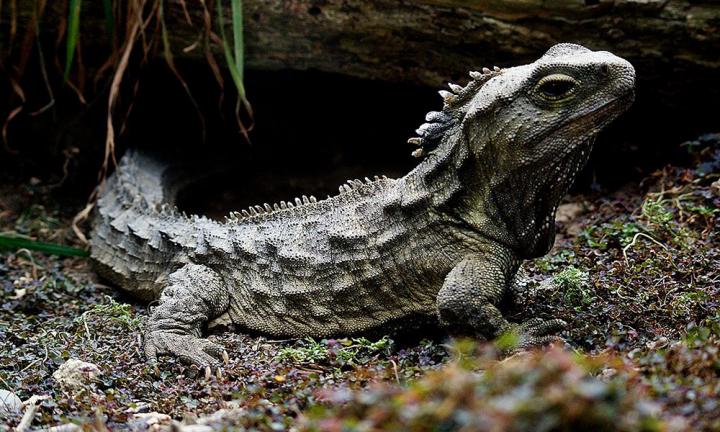
On average, tuataras live to about 60 years. They are highly dependent on climate and temperature to keep them safe. One specific tuatara, though, was luckier than most. He was 111 years old when he first became a father. He was kept in a museum in New Zealand.
Ocean Quahog Clam
Native to the North Atlantic ocean, the ocean quahog clam is commonly used in seafood dishes. Though they are a food source, they are thankfully not threatened by overfishing. They are one of the oldest marine creatures in the world, living for an average of 200 years.
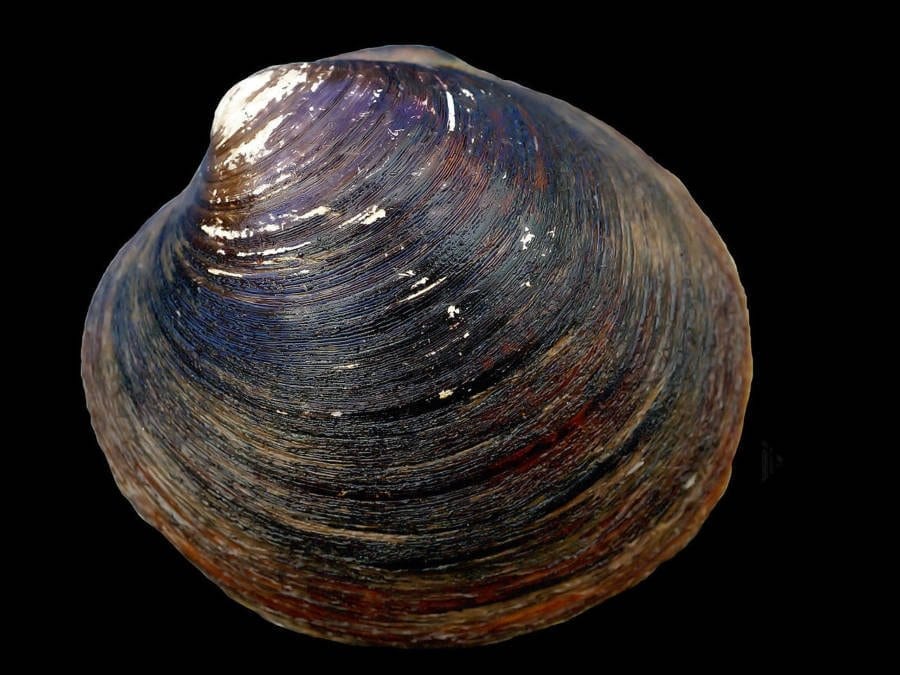
One particular clam found off the coast of Iceland was reported to be 507 years old, making it the oldest quahog clam on record. These clams have a shell that measures between 2.8 to 4.3 inches. They typically burrow into sand and sediment.
Greenland Shark
At 20 feet long, the Greenland shark is one of the largest species of sharks found in the North Atlantic’s frigid waters. They are so large that they have been found with polar bear and moose carcass in their stomachs.
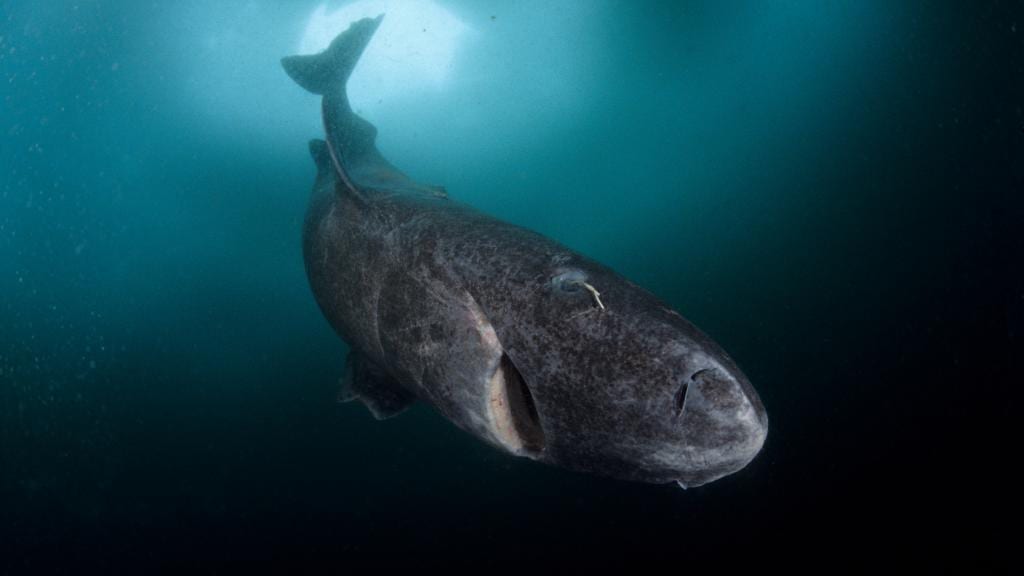
These sharks have a minimum lifespan of 272 years. Yes, you read that right—minimum. The oldest specimen ever, died in 2016 at 392 years old. The meat of the Greenland shark is edible, but it needs to be properly cured unless you want to end up very ill.
Pacific Ocean Perch
Also known as the Pacific rockfish, these fish are known for their bright colors ranging from a very light red to a dark brick red. They are found in the North Pacific, covering waters all the way from Japan to California.
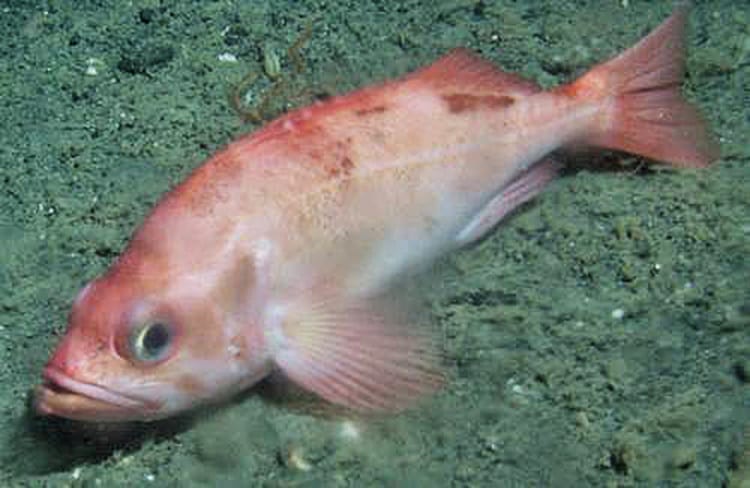
These fish have a maximum lifespan of 98 years. The longevity of the Pacific Ocean perch is due to its low mortality rate and slow growth rate. The mature age for reproduction is around 10 years of age.
Sablefish
Sablefish are commonly referred to as black cod. They are found in the North Pacific and South Pacific waters and are also a common food source. When not being fished for food, they fall prey to sperm whales and killer whales.
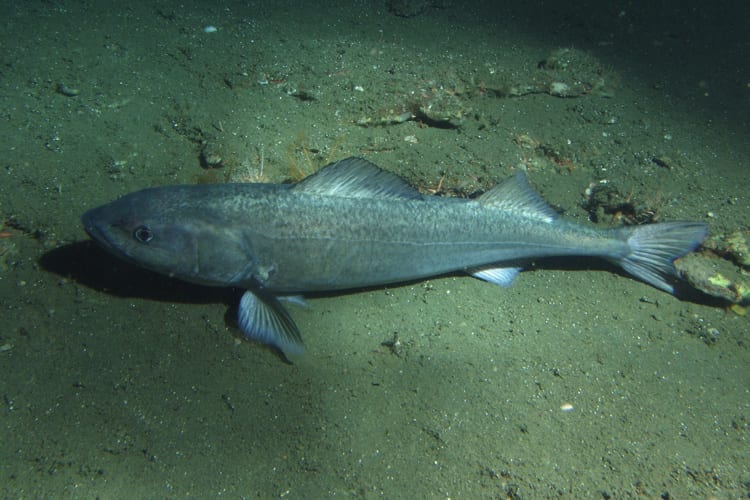
While they are ordinary-looking, sablefish have extraordinary lifespans, reportedly living up to a whopping 114 years in the wild. Up to the age of 114, adults can weigh as much as 31kg. They reach maturity between 5-7 years of age.
Sponges
If you considered the two immortal animals to be a cop-out, then consider sponges the winner of the list. These multicellular organisms are the longest-living creatures on Earth. Their porous bodies allow water to circulate through.
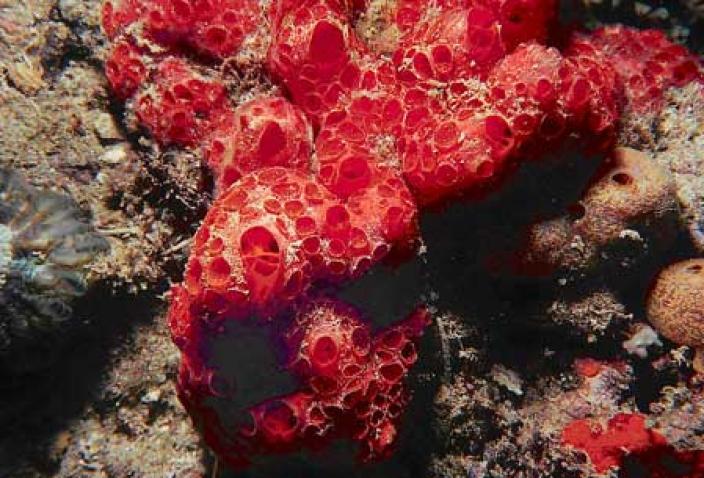
Barrel sponges in the Caribbean have been reported to live over 2,300 years. Sponges in the Antarctic have been recorded at 1,550 years old. But one particular species of glass sponge takes the cake, living for 10,000 years and counting.
